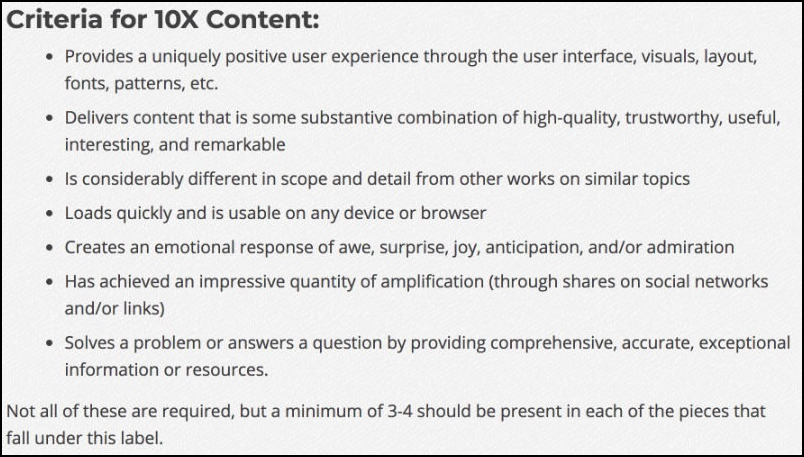
Interacting with customers can be done in several ways, ranging from creating a digital game to delivering incentives. Interactive marketing can also include the use of modern technology like chatbots, virtual realities, and infographics. Multimedia storytelling may be used to inspire customers to keep working with you. To help you get started, here are some examples. Learn more about this type of marketing, and how to incorporate it into your strategy.
Multimedia storytelling
Consider the following steps when creating a multimedia story: Gather background information, collect visuals and create a list listing the story's components. Collect quotes and other strong emotional elements. Multimedia storytelling formats such as video, stills, text, audio and graphics are best for best results. Although some elements may be redundant, they are all necessary for a multimedia story to be effective.
One example is a New York Times commercial that features a journalist who investigates the Rohingya genocide. The advert blends video, photo, as well as text to create a visceral experience for the viewer. In addition to creating a compelling story, this interactive marketing strategy allows consumers to see a brand's commitment to the truth and its ongoing efforts to restore public trust in its mission.
Interactive infographics

Your website can get noticed online if you use interactive infographics. Interactive infographics allow the audience interact by clicking, scrolling, or rolling over sections of the content. They can help you keep your audience's attention while also supporting search engine optimization. Backlinks from trustworthy entities are important for search engines, so a lot of backlinks will help you get more exposure.
An interactive infographic gives the user additional information as they scroll and click. Consider the interactive elements when you are creating an infographic. It is also possible to identify your target audience so that your infographic aligns with this group. You can, for example, create an infographic that explains millennials if you are targeting millennials. This will make your infographic much more appealing to them.
Interactive video
Interactive videos are one of the most well-known forms of interactive advertising. A video that is interactive allows the viewer to choose different perspectives and angles. It may be interactive, so the user can view the stage from different angles. One example is a video about the Bob Dylan box set. It could be viewed from different perspectives. The interactive video went viral, reaching over 1 million views in one day. Before creating interactive videos for your brand, there are a few things you need to remember.
A video that allows viewers answer questions can help establish brand identity. Brands are more than just products and services. They embody a spirit, a philosophy and an opinion. Branding is equally important as product marketing. Interactive videos can help you build your brand image. Jevellery Fashion Campaign is one example of an interactive video. This campaign encourages consumers and allows them to interact through the video content.
Interactive ads

Interactive ads come in many forms. Interactive ads include games, polls and pop-ups. However, some interactive ads offer free content in exchange to an email address. Interactive ads put the consumer in control of their experience, as they are able to engage with them as long as they want and ignore those that don't speak to them. This is a win-win situation for both the marketers and the consumers. They make the ads stand out and instill the message in the minds.
Interactive ads allow for unprecedented data collection because of the way they can interact with it in different ways. Interactive ads allow companies to determine what aspects were most appealing to consumers and others to see which parts caused them bounce. Data collected by advertisers when they engage with an advert will be invaluable for future advertising development. Interactive ads have many advantages, but can be expensive and time-consuming.
FAQ
Are there any restrictions on linking to content from other websites?
Yes! It's known as link building. It is a great way of increasing traffic to your website by linking back to other sites' content. But only link to reliable sources.
Is content marketing worth spending money on?
Content marketing is an essential part of any online business strategy. This is a great way to get exposure for your brand. Content marketing not only benefits customers but also makes you stand out among the rest.
Content marketing is about creating useful information that people want. The most successful companies know how to engage their target market by using content marketing as a central component of their digital marketing strategy.
What is the difference in content marketing and content creation?
Content marketing is the belief that all great brands share the same message. They provide valuable information that people need and want.
Content marketers are trained to create the right content at each time and for every channel.
They also have the ability to devise a plan for distribution and promotion.
This means that they strategically think about what they do, and why it matters.
This is the core skill set needed to be a successful content marketer.
What is the primary goal of content marketing?
Content marketing aims to create valuable and relevant information for customers. This can be done via email campaigns, blog posts, white papers, and other channels. Delivering value to your audience is the key.
What is strategic copy marketing?
Content Marketing is the art of creating valuable content for others to share across channels. It's all about giving people what they want. This is what makes the most successful businesses.
Strategic Content Marketing ensures you give them exactly what they need at the right time.
It is important to understand what people care about, and to listen to their thoughts. You must then create content of high quality that addresses their concerns and solves them problems. This builds trust and loyalty and ensures you are top of mind when they need your product or service.
What are the 7 steps in content marketing?
The seven-step process of content marketing involves:
-
Identify the problem
-
Find out what's working now
-
Make new ideas
-
These strategies can be developed
-
Try them
-
Take measurements
-
Keep going with the same process until something works.
This approach has been proven to work well for businesses large and small.
Statistics
- In fact, would pay more for a better customer experience, and 86% of B2B buyers would pay more. (neilpatel.com)
- This marketing strategy landed Ford a 15.4% conversion rate. (neilpatel.com)
- Seventy-two percent business to business (B2B) (mailchimp.com)
- Forty-seven percent of buyers view 3 to 5 pieces of content before engaging with a sales representative. (mailchimp.com)
- We found that 40% of businesses don't have a documented strategy yet. (semrush.com)
- Measure your goals with a progress indicator of 0-100%. Make your goals collaborative and transparent (semrush.com)
- According to our research, 65% of companies with very successful content marketing in 2021 ran content audits at least twice a year. (semrush.com)
- Progress indicators (0–100%) allow each team member to see how attainable each goal is and understand what remains to be accomplished. (semrush.com)
External Links
How To
Informationgraphic creation tips to help with content marketing
Infographics can be a great way to simplify complex concepts and make it easy to understand. You should use infographics to spread the message about content marketing.
For creating an infographic you'll need software such as Adobe Illustrator and Photoshop. These programs can be used to create different shapes and elements that represent your data. Then, you can add colors and fonts to make it look great. After your design is complete, you can upload images from Unsplash and Pixabay to your design.
Check out existing infographics online to get some ideas. A picture of a food Pyramid could be used to show how many calories each food has. Or, you might choose to look up how much sugar is in soda pop and change that number to a picture of a bottle of Coke.
Once you have designed your infographic you can share it via social media channels, such as Facebook or Twitter. This allows people who don’t know much about the topic to find out more. Include hashtags if you plan to share your infographic via social media platforms. This will allow others to see what you're talking. Hashtags allow users to follow along with conversations surrounding specific topics.
Make your infographics shorter than normal if you are creating them. An average blog post will be between 2000 and 5000 words. An infographic, however, only needs 500 to 1000 words. This allows you to convey more information in a smaller space.
Your infographic should be easy to read for some viewers. Use large fonts, but don't overuse color in your infographics. Also, make sure that all your text is legible.
These are additional tips:
-
Choose an Infographic Template. There are many online templates that you can download or print. Canva, Piktochart or Google Slides are three of the most well-known templates.
-
Create your Infographic. Use the template below to create your infographic. You can use any kind of media that you feel is appropriate for your audience. You might use photos of local restaurants to create an infographic about the best places in Seattle.
-
Add text. After creating your infographic, add text with Microsoft Word, PowerPoint, and Canva.
-
Add Images. Add images to an infographic. These images can include charts, graphs and icons. Make sure the picture is relevant to your topic before you add it.
-
Make It Interactive. You can add interactive elements such as buttons, maps, and links. This will engage your audience.
-
Share. Share your infographic after you're done.
-
Measure. Measure. Are people clicking through to your website or not? Did they sign-up for your email address? What was their reaction to your infographic?
-
Improve. Is there a way to improve your infographic? Do you think your infographic could be better?
-
Repeat. Do this again!